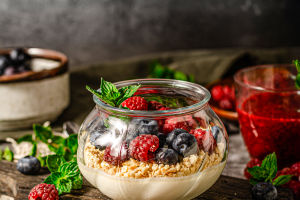Have you ever dreamed of picking a ripe strawberry or juicy lemon straight from your own backyard or balcony?
With the right approach, growing your own fruit at home isn't just possible—it's rewarding, sustainable, and surprisingly easy. Whether you have a large garden or a small apartment, there are fruit-growing options for everyone.
Why Grow Fruit at Home?
Growing fruit at home provides more than just delicious harvests. It allows you to control the growing process, avoid unnecessary pesticides, and enjoy the freshness that store-bought fruits can't match. According to a 2022 study from the American Society for Horticultural Science, homegrown produce tends to have higher nutrient density and better taste due to minimal transportation and immediate consumption. It's also a fun activity that promotes physical activity and mental well-being.
Start with Easy-to-Grow Fruits
If you're a beginner, start with fruit that's known for being low-maintenance and quick to grow. Here are some great choices:
• Strawberries: Perfect for containers or hanging baskets. They need lots of sunlight and regular watering.
• Lemons (dwarf variety): Can thrive indoors in pots with good drainage and plenty of light.
• Blueberries: Require acidic soil and prefer containers if your garden doesn't have the right pH.
• Tomatoes: Often mistaken as vegetables, these fruits grow easily in pots and need support like cages or trellises.
• Figs: Hardy and drought-tolerant. A small fig tree can grow in a large pot on a patio.
Choose the Right Growing Space
Don't worry if you don't have a yard. There are options for every living situation:
• Balcony or patio: Use containers and vertical growing racks.
• Windowsills: Great for herbs, strawberries, or dwarf citrus.
• Backyard gardens: Offer space for trees like apple, pear, or peach.
• Greenhouses: Provide year-round growing conditions, especially helpful in cold climates.
Make sure the area you choose gets enough sunlight—most fruit plants need at least 6 to 8 hours of direct light daily. If you're growing indoors, consider supplementing with LED grow lights.
Soil, Water, and Drainage Essentials
Healthy soil is the foundation of healthy fruit. Use nutrient-rich potting mix or compost-enhanced soil. Ensure good drainage to prevent root rot. Most fruits prefer slightly acidic to neutral pH (between 5.5–7.0), though blueberries need more acidic conditions (around 4.5–5.5).
Watering is key—too little and the fruit will be small or dry; too much and roots may suffer. A good rule of thumb is to keep the soil moist but not soggy. Mulching around the plant base can help retain moisture and keep weeds away.
Pollination and Flowering Tips
Many fruits need pollination to produce fruit. Outdoors, bees and insects handle this. Indoors or in greenhouses, you might need to hand-pollinate using a small paintbrush to transfer pollen from flower to flower. This is especially important for plants like tomatoes, lemons, or passionfruit.
Be patient—some fruit trees may take a couple of years to produce. But small plants like strawberries or tomatoes can reward you in just a few months!
Fertilizing and Natural Pest Control
Feed your fruit plants with a balanced organic fertilizer during their growing season. Nitrogen promotes leafy growth, phosphorus encourages roots and flowers, and potassium supports fruit development. For example, tomatoes benefit from low-nitrogen but high-potassium fertilizers once they start flowering.
To deter pests naturally, use:
• Neem oil spray
• Companion planting (e.g., basil near tomatoes)
• Sticky traps for flying insects
• Mesh covers to protect fruit from birds
Avoid harsh chemical sprays, especially if you want your produce to stay fresh, healthy, and safe.
Pruning and Maintenance
Regular pruning helps your plant direct energy into producing fruit rather than excess leaves. Remove dead or diseased branches and trim overcrowded areas to allow better airflow. For potted trees, prune the roots annually to prevent them from becoming pot-bound.
Cleaning up fallen leaves or spoiled fruit also keeps disease and pests at bay.
Harvesting and Storage
Each fruit has its own harvest time, but general signs include color changes, fruit size, and ease of picking. Don't tug too hard—ripe fruit often detaches with a gentle pull.
Once harvested, some fruits like berries should be eaten within a few days. Others like apples or lemons can be stored in cool, dark areas for several weeks. Consider freezing excess fruit, making jam, or dehydrating slices for snacks.
Expert Tips for Beginners
Horticulturist Dr. Emily Novak suggests, "Start with one or two plants, learn their habits, and build from there. Success is easier when you give each plant the attention it needs rather than starting with too many."
Research from the National Gardening Association in 2023 also found that homegrown produce contributes to greater dietary diversity and increased consumption of vitamins and antioxidants.
Enjoy the Fruits of Your Labor!
Once your fruit plants start producing, the rewards are delicious—and emotional. There's something deeply satisfying about watching a plant grow from seed to harvest. Plus, it's a sustainable way to reduce your grocery bill and lower your environmental footprint.
Have you tried growing fruit at home? What worked—and what didn't? Share your green thumb stories! And if you haven't started yet, now's the perfect time to plant that first seed. Happy growing!


